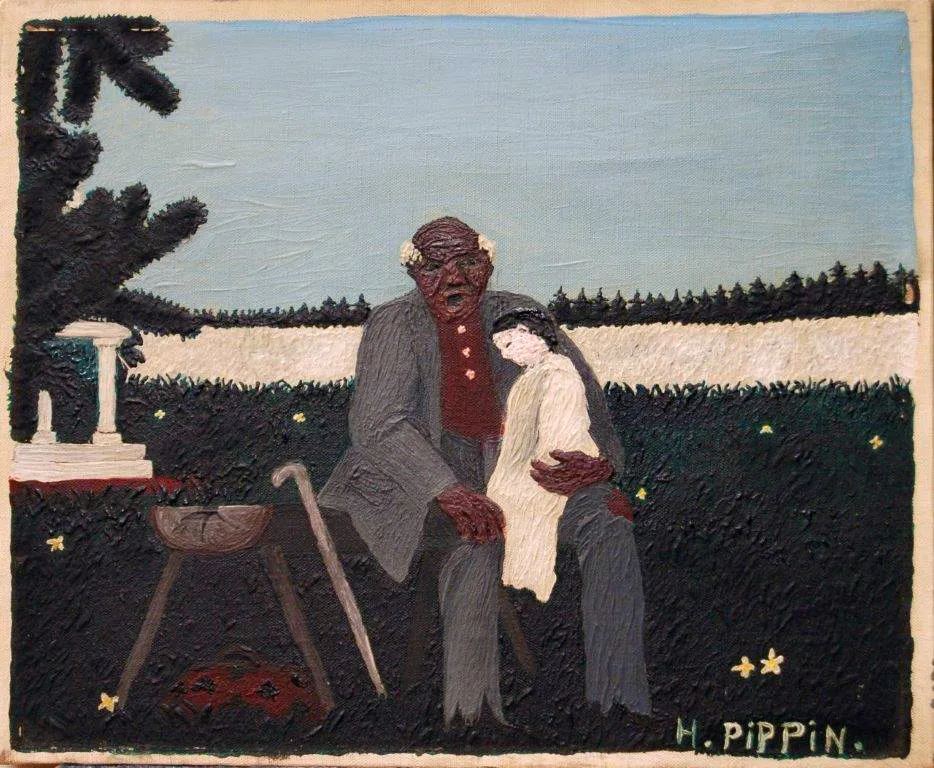Fallen Through The Cracks – Black Artists in History: Horace Pippin
Horace Pippin
#FallenThroughTheCracks – Horace Pippin was born in West Chester, Pennsylvania, on February 22, 1888. In World War I, Pippin served in K Company, the 3rd Battalion of the 369th infantry regiment, known as the famous Harlem Hellfighters, a predominately Black unit in a segregated US Army. He started painitngin the 1920s as a way to rehabilitate his injured arm. He began painting on stretched fabric and burning designs into wood panels and adding emphasis to highlight specific components of the image. His first oil painting, The Ending of the War, Starting Home (1930–1933), depicts a scene informed by his experience at the Battle of Sechault, where he was shot.
Pippin’s oeuvre includes a variety of subjects and compositional strategies. His works include scenes inspired by his service in World War I, landscapes, portraits, and biblical subjects. Some of his most-prominent works address the U.S.’s history of slavery and racial segregation. His painting of John Brown Going to his Hanging (1942) is in the collection of the Pennsylvania Academy of the Fine Arts in Philadelphia and is part of a trilogy on the abolitionist sometimes credited with igniting the Civil War.


In the eight years between his national debut in the Museum of Modern Art’s traveling exhibition “Masters of Popular Painting” (1938) and his death at the age of fifty-eight, Pippin’s recognition grew exponentially across the country and internationally. In the catalog for one of his memorial exhibitions in 1947, critic Alain Locke described Pippin as “a real and rare genius, combining folk quality with artistic maturity so uniquely as almost to defy classification.”
Pippin painted about 140 works, many in museum collections, including the Metropolitan Museum of Art, Philadelphia Museum of Art and The Barnes Foundation. He was the first African American artist to be the subject of a monograph, Selden Rodman’s Horace Pippin: A Negro Painter in America of 1947. The New York Times eulogized him as the “most important Negro painter” in American history. Horace Pippin died on July 6, 1946, in Chester County, PA.
(Text paraphrased from Wikipedia and other sources. All Images are the property of the copyright owners. This clip is for educational purposes.)
